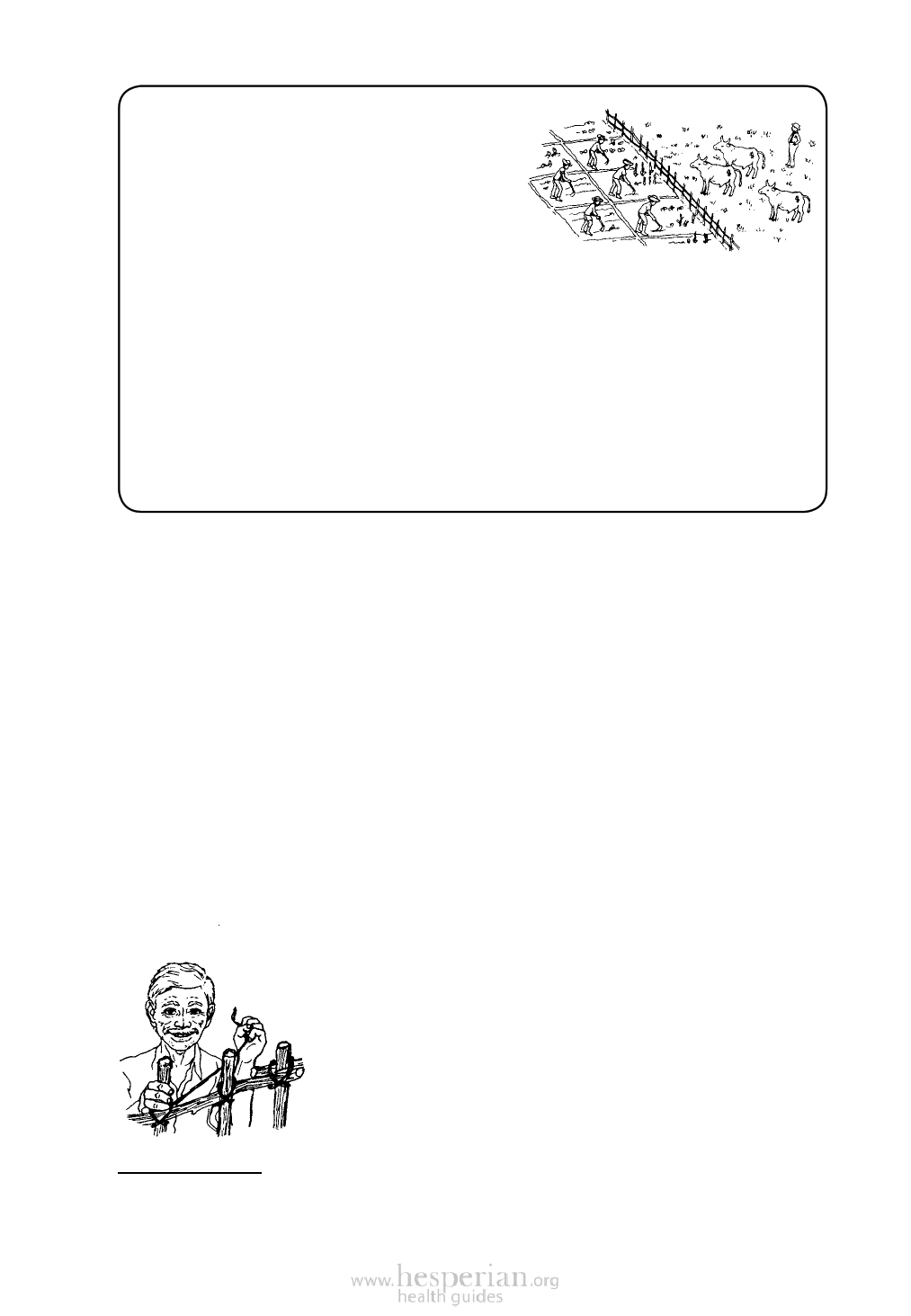
25-29
EXAMPLE 5: In Silva Valley, the big problem
is outside the community. Most of the Silva
Valley land belongs to 3 rich families who live
far away. The rich landholders have big farms
that raise cattle and sheep to sell in the cities.
The land-holders do not allow anyone else to
grow food on their land, not even the land that
is not being used. The families in Silva Valley have only their own small gardens in
which to grow food, and they cannot grow enough. The real problem is that a
few people own most of the land, while the rest of the people do not have
enough land to grow food.
The people of Silva Valley must attack this big problem, for it is causing
malnutrition in their children. But they cannot attack it alone. They must
get help from important people. So they joined together to write a letter to
the government to ask for help. The government is now trying to force the
landholders to let the poorer families use some of their land. But the landholders
are rich and powerful. They have not yet agreed to give up their land.
This last story, with its discouraging ending, is typical for much of the world. So
is the government’s failure to take effective action. As millions of landless villagers
can testify, government ‘land reform’ often consists of promises only. Each year
more of the land ends up in the hands of a few rich families.
In many countries, it is a deception to teach poor people that the government
defends their land interests. Too often, government sides with the rich and
powerful. After all, many government officials are rich landholders themselves.
Community-based programs in many parts of Asia and Latin America have
learned to expect little help from “important people” over questions of land and
justice. Nevertheless, a few programs have found ways to bring about small land
reforms in a peaceful way, with or without government help.
In Guatemala, for example, the Chimaltenango Development Program has set up
a ‘land fund’. This fund lends money to organized groups of landless peasants so
they can buy unused farmland. The program teaches the peasant farmers ways to
improve soil and crops, so that in a few years they can pay back their loans. The
same money is then loaned to other groups to buy more land.
In a similar way. the health team in Ajoya, Mexico has set up a
‘fence fund’. Poor farmers can borrow money from the fund in order
to fence their plots of farmland. Before this fund existed,
poor farmers had to borrow from the rich to fence their
land. The interest rates were so high that they could never
pay back the loans. This allowed the rich landholders to
claim grazing rights on the harvested fields, year after year.
But now the poor farmers are able to sell grazing rights to
the rich. This means they have more money for food.*
*Note: The 2 funds we have just described were started with ‘seed money’ from international non-government
organizations. These are examples of how foreign aid, when directed to self-help programs organized by the poor,
can actually do more good than harm. (Foreign aid that is channeled through oppressive governments often ends up
strengthening the rich and weakening the poor. See Aid as Obstacle, by Lappe, Collins, and Kinley, Food First (Institute
for Food and Development Policy), 398 60th Street, Oakland, CA 94618, U.S.A. www.foodfirst.org